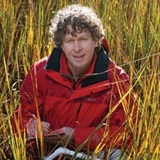Harnessing Positive Species Interactions to Enhance Coastal Wetland Restoration
Coastal wetlands are among the most productive ecosystems in world, providing shoreline protection, carbon storage, pollution mitigation, and fisheries production. However, coastal wetlands are in decline due to coastal development, invasive species, overfishing, and climate change. Many managers and restoration practitioners recognize that conservation alone is not enough to save coastal wetlands and are now prioritizing habitat restoration alongside protection.
Recent ecological research that suggests positive interactions between species can play an important role in boosting recovery. Positive interactions refer to interactions between organisms where at least one partner species benefit, and neither are adversely impacted. Examples include:
- ameliorating physical, biological, and chemical stresses;
- protecting each other or another species from shared threats; and
- facilitating successful trophic relationships between predators and grazers that lead to plant success.
In this study, the authors review the scientific evidence for the role of positive interactions in salt marsh and mangrove ecosystems and outline how they can be incorporated into restoration practice.
- Renzi, J.J., He, Q., and Silliman, B.R. (2019) Harnessing positive species interactions to enhance coastal wetland restoration. Frontiers in Ecology and Evolution.https://doi.org/10.3389/fevo.2019.00131

